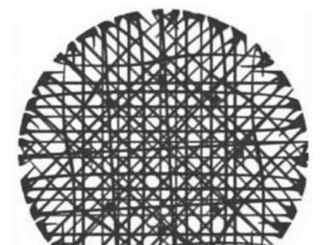Let’s be honest—cancer is brutal. But when it becomes refractory, meaning it resists even the most aggressive therapies, it turns into something far more devastating. At that point, standard treatments like chemo, radiation, or even immunotherapy often fail. This is where cutting-edge science steps in. One of the most exciting developments in this space is the use of oncolytic viruses—specially engineered viruses designed to destroy cancer cells from the inside out.
And just when you thought that was cool enough, scientists took it a step further. They’ve now created a new generation of these viruses that tap into the body’s strongest immune reaction—hyperacute rejection.
What’s a Hyperacute Rejection-Engineered Virus?

Sounds complex, but the idea is actually pretty elegant. In organ transplants, the immune system sometimes launches a full-blown attack against what it sees as foreign tissue. That’s called hyperacute rejection. Scientists thought, “What if we could engineer that same response—but aim it directly at tumors?”
Enter: hyperacute rejection-engineered oncolytic viruses. These are modified viruses that infect tumor cells and then signal the immune system to go into overdrive, launching a vicious assault on the cancer—without harming healthy cells. It’s like setting off fireworks right inside the tumor.
How Do These Viruses Actually Work?
Think of them as two-pronged weapons.
First, they act like stealth invaders, entering cancer cells and replicating until the cells burst—literally killing the cancer from the inside.
Second, they light up a biological “flare” by expressing immune-stimulating genes like GM-CSF or IL-12, calling the immune system into battle. This helps recruit T-cells, natural killer cells, and other immune warriors to finish the job.
It’s not just a local effect either. When the immune system gets revved up like this, it can start attacking cancer throughout the body—even tumors far from the injection site. That’s what researchers call an abscopal effect.
Video : Oncolytic Virus Therapy: Dynamite for Cancer Cells
Real-World Trials: Taking the Fight to Refractory Tumors
This isn’t just a lab concept anymore. Clinical trials are underway, testing this approach on cancers that are notoriously hard to treat. We’re talking about:
- Glioblastoma
- Pancreatic cancer
- Metastatic melanoma
- Triple-negative breast cancer
In these trials, scientists inject the virus directly into a tumor and monitor how the immune system responds. The goal is to not just shrink tumors, but to turn the whole immune system into a long-term cancer-fighting machine.
Challenges Along the Way: It’s Not All Smooth Sailing
As with any groundbreaking treatment, this approach has its share of hurdles.
The immune system is powerful—and unpredictable. Too much immune activation can lead to inflammation or damage to healthy tissue. On the other hand, cancer patients often have weakened immune systems from previous treatments, making it harder for their bodies to mount a strong response.

That’s why researchers are carefully managing doses, choosing the right patients, and even exploring combination therapies—like pairing these viruses with immune checkpoint inhibitors—to strike the perfect balance between power and safety.
The Human Element: Ethics, Hope, and Informed Consent
Let’s not forget the people behind the science. Many of the patients in these trials are at the end of the line. For them, this is more than a clinical experiment—it’s a shot at life. It’s essential that they understand both the promise and the risks.
Still, for many, the choice is easy. Participating in a trial like this offers a glimmer of hope—and the chance to be part of something that could change medicine forever.
Why This Breakthrough Could Redefine Cancer Care
What makes this approach truly revolutionary is how it rewrites the rules of cancer treatment.
Instead of just trying to kill cancer with drugs or radiation, we’re now teaching the body to recognize it as an invader and destroy it naturally. It’s not just treatment—it’s a potential cure strategy that could provide long-term protection and possibly prevent recurrence.
This method transforms the body’s immune system into a smart, targeted, relentless cancer-fighting force.
Video : Oncolytic Virus-Mediated Immunotherapy: A Combinatorial Approach for Cancer Treatment
Looking Ahead: A New Era in Immunotherapy
Hyperacute rejection-engineered oncolytic viruses are still in their early days, but the potential is enormous. If successful, they could become part of a new standard of care for patients who previously had no good options.
This isn’t just about surviving cancer—it’s about changing how we fight it. It’s about using nature’s most aggressive defense system, the immune response, and pointing it straight at the disease.
So here we are, standing at the edge of a new era in oncology—where viruses may become our allies, and the immune system finally gets the upper hand in the battle against even the most stubborn cancers.
And it all started with one radical question: What if we made the immune system angry—at cancer? Turns out, that just might be the secret weapon we’ve been searching for.


